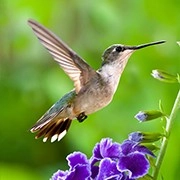Waters Full of Life
Hey Lykkers! Let’s dive into a world beneath the surface—where fish farms flourish, rivers pulse with life, and oceans quietly support our planet. Aquaculture and Fisheries Science is all about rearing aquatic species for food and understanding the complex, beautiful systems they live in. From tilapia tanks to mangrove ecosystems, this field combines biology, ecology, technology, and human care.
This guide will introduce you to the essentials: how aquaculture supports food security, and how responsible practices help preserve wild habitats. Whether you're just curious about how seafood ends up on your plate or dreaming of designing a sustainable fish farm one day, you’ll walk away with a fresh perspective on water-based life.
Part 1: Aquaculture—Farming Beneath the Surface
Let’s start with aquaculture, which is like farming, but for fish, shrimp, mollusks, and more. It's a growing field that blends care, science, and innovation.
Creating the Right Environment
First things first—rearing fish isn’t as simple as filling a tank. You need to think about water temperature, oxygen levels, flow rate, and the type of feed. Each species has its own comfort zone, and when you get that balance right, they grow strong and healthy.
You might picture large outdoor ponds or high-tech indoor tanks. Both work, but success depends on your attention to detail. Watch how your fish swim and feed—those subtle signs tell you if something’s off before any problem grows.
Feeding and Health Monitoring
Feeding time is more than a routine. It’s a chance for you to observe behavior, adjust rations, and prevent waste. Uneaten feed can pollute the water, so the goal is to give just enough for your fish to thrive without throwing the balance off.
Keep a close eye on signs of stress or illness—like unusual swimming, discoloration, or loss of appetite. A proactive approach saves time and resources, and helps you avoid relying too much on medicine.
Supporting Sustainability
Sustainable aquaculture means raising aquatic species without harming their surroundings. That might include using recycled water systems, selecting native species, or reducing feed from wild-caught fish. By learning and adapting, you make your farm a part of the ecosystem—not a burden on it.
Part 2: Fisheries and Ecosystem Awareness
Now let’s head to the wild—lakes, rivers, and oceans—where fisheries science helps manage resources and protect biodiversity.
Understanding Fish Populations
You can’t just keep taking from nature without giving back. So scientists study fish populations to learn how many individuals are in the wild, how fast they grow, and when they reproduce. That data helps set limits so species don’t disappear.
You’ll often hear about “catch limits” or “closed seasons.” These strategies give fish time to breed and recover, ensuring future generations get to enjoy the same species you see today. It's like letting the ocean catch its breath.
Protecting Aquatic Habitats
Healthy fish need healthy habitats. That means clean water, healthy plants, and space to roam. Wetlands, mangroves, and coral reefs all serve as nurseries or shelters for young aquatic life.
If you’re near a coastline or a river, you can be part of protecting it. Use fewer harmful chemicals at home, avoid plastic waste, and support efforts that restore wetlands. Every action adds up in the big picture.
Community Involvement Matters
Fisheries science isn’t just for labs—it belongs in local communities, too. When fishers, scientists, and governments work together, solutions become practical and fair. If you live in a fishing area or love seafood, take time to learn where it comes from and how it’s caught.
Supporting local, responsibly harvested seafood can have a bigger ripple effect than you might imagine.
Lykkers, aquatic life is both ancient and incredibly modern—feeding people, sustaining cultures, and balancing nature. By understanding aquaculture and fisheries science, you become part of a bigger movement to nourish the planet responsibly.
From the gentle swirl of a school of fish to the thoughtful design of a sustainable farm, this world beneath the waves is full of lessons. Stay curious, ask questions, and you’ll keep swimming toward better choices—for both people and the planet.

 · Information Team
· Information Team